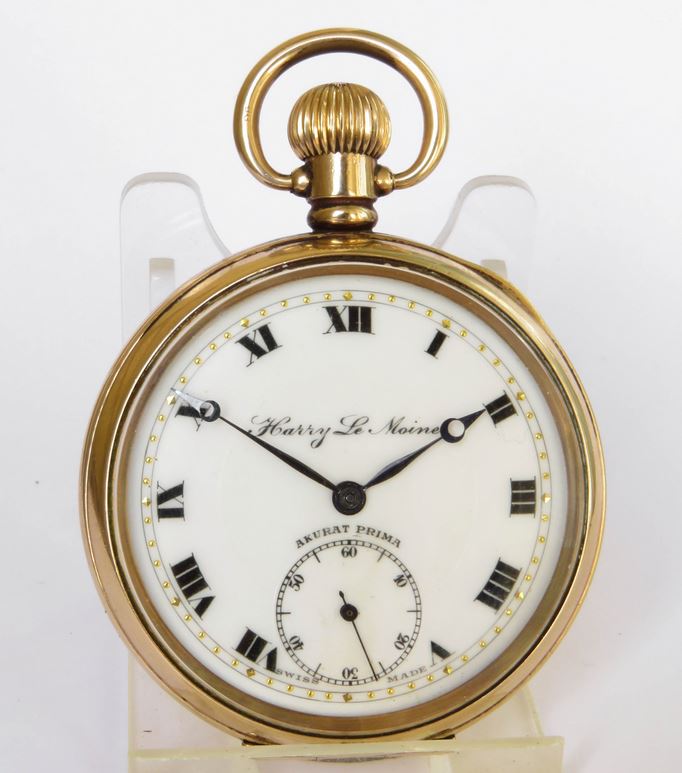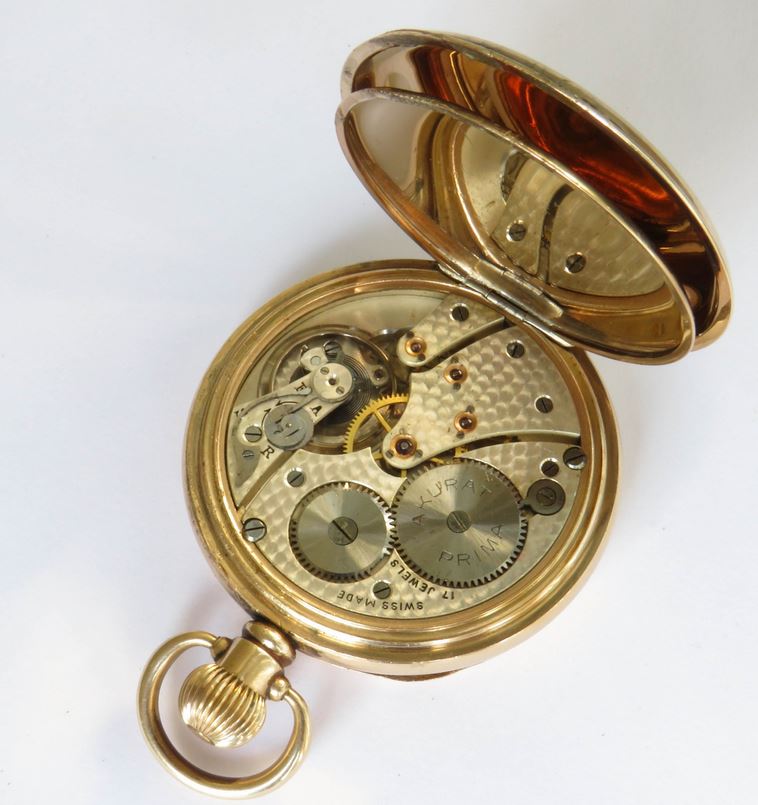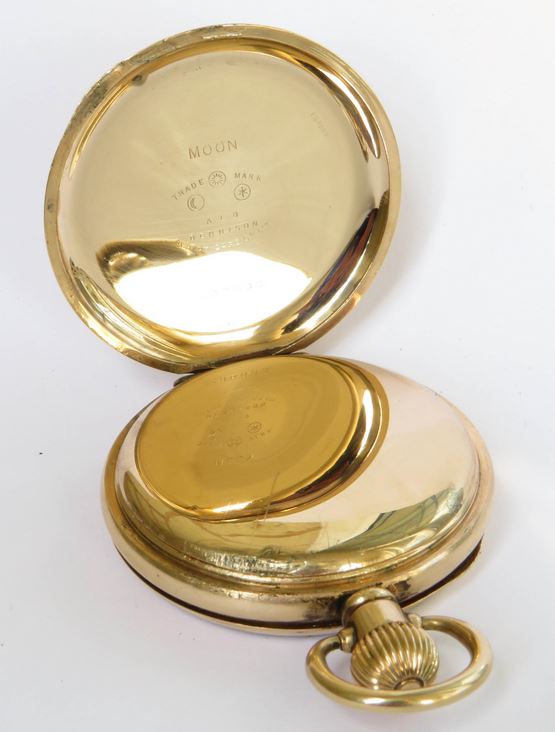Last updated on May 11, 2024
A recurring theme in my blog posts is the “one that got away”. I enjoy researching my watches as much as I do wearing them. However, the time it takes to research a watch means that sometimes, when I finally decide to make the purchase the watch has already been sold. This is another example, with this Revue pocket watch retailed by Harry Le Moine. The good news is that I have learned something from my research that I can apply to a future purchase.
Harry Le Moine
According to census records, Harry Brown Le Moine was born on 30 January 1893, in Blackburn, Lancashire, England. His father was Henry John Le Moine and his mother was Annie Brown, both aged 21. Harry married Olive Clementson in 1915. They had two children, Harry and Sylvia. Harry died on 21 June 1962, in Blackburn at the age of 69.
According to the 1901 census, Henry Le Moine, aged 29, was listed with the profession of a jeweller. There was no record of Henry in the 1911 census. This suggests that perhaps Henry had died and that the young Harry took over the business. Harry and Henry are interchangeable names, so it could be that Henry was known as Harry and the business was run as “Harry Le Moine, jeweller”.

Retail business
The shop was located at 18 King William Street, Blackburn. I could see this address listed on a number of images for advertising paraphernalia, such as ashtrays and watch keys. It was also visible in a number of images of surviving jewellery boxes. The business was variously described as a jeweller, diamond merchant, silversmith and watchmaker. Certainly, the latter could only be applied in the loosest sense. The business may have been capable of servicing and repairing watches, but it certainly was not a watch manufacturer. As well, as this particular watch, I found a reference to an auction sale of a Rolex watch, dating to 1947 that included the original papers from Harry Le Moine. Obviously, this was a business that sold high-end timepieces.
A 1912 Police gazette report of stolen goods lists a jewellery box marked, Harry Le Moine, Jeweller, Blackburn and Accrington on the case. At some point, the business had expanded, which suggests that the young Harry was an astute businessman. In the January 1915 edition of the Blackburn Weekly Telegraph, Harry speaking as the President of the Chamber of Commerce was quoted commenting on the good levels of Christmas trade in 1914. He was also a Freemason and listed as a Senior Warden at the Verity Lodge in 1919. After Harry’s death in 1962, the business was taken over by his children Harry C and Sylvia. I can find no further trace of the business, so I suspect it was dissolved upon the retirements or deaths of Harry’s children.
Movement
The watch has a good quality Swiss made 17-jewel Revue movement. It has a snail cam regulator, screw-set jewels and engine-turned detailing to the plates. The movement is signed Akurat Prima which roughly translates as ‘excellent time keeper’. In addition to the regulator lever, there is a disc with a snail cam on it. The snail cam is so-called because it looks like the profile of a snail’s shell, with a radius that starts small and increases as the cam is turned. A spring holds the bent tail of the lever against the snail cam. The snail cam allows much finer regulation than just a simple lever regulator.

Screw-set jewels are attached to the movement plate with small screws. This required more material and more time to assemble, and as a result, screw-set jewels were commonly fitted into movements of higher quality. Screw-set jewels are also considerably easier to replace if one is cracked or broken. The engine-turned detailing on the movement plates is simply there for decoration. It plays no part in the running of the watch.
Gédéon Thommen
The “Société d’Horlogerie à Waldenburg” (Waldenburg clock and watchmaking company) was formed in 1853 to produce watches from ebauche movements. The company struggled with debt and the business was sold in 1859 to a local merchant, Gédéon Thommen. The company was renamed to “Gédéon Thommen – Uhrenfabrikation” (watchmaking). After restructuring by Thommen, the business began to recover, focussing attention on improved manufacturing methods to produce high-quality watches. Its primary brand name was GT.
Revue
In 1890, Gédéon Thommen died and his son Alphonse took over the company. In 1905 Alphonse Thommen transformed “Gédéon Thommen – Uhrenfabrikation” into a limited company. The company was called “Thommens Uhrenfabrik AG”. Additionally, around 1908, the brand name changed from GT to Revue.
Dennison case
The watch measures 50mm in diameter excluding the winding stem and the loop. The case is the gold-filled Moon model from the Dennison Watch Case Company. The case is layered with 10-carat gold and was guaranteed to last for 10 years. In this case, the watch is well past its guarantee. Externally, the case is in near-mint condition. The inner hinged cover protects the movement. There is some marking, mainly to the edge, where this inner cover has been opened in the past. It’s only visible when the back cover is opened and doesn’t affect the overall presentability of the watch. It could be classed as patina.

The Dennison Watch Case Company
Aaron Lufkin Dennison (1812 – 1895) was an American-born watchmaker. In 1874, he founded the very successful Dennison Watch Case Company in Birmingham, England. Originally, the company was called Dennison, Wigley & Company. It operated from a small workshop on the side of the Dennison family home. Over time it grew to produce 100,000 high-quality watch cases per year. Dennison died in 1895, and he was succeeded in business by his son, Franklin Dennison. The company was renamed the Dennison Watch Case Company Ltd in 1905 and continued as a successful business until 1967.
Dial
The enamel dial is signed with the name of the original retailer of the watch, Harry Le Moine. The dial is in lovely condition and the gold minute markers are a handsome feature. The dial has blued-steel hands and a subsidiary seconds dial with the wording Akurat Prima printed above. The Revue pocket watch for Harry Le Moine, c1920 is a nice presentable watch, that would have been great for my collection. However, yet again the time it takes to research the watch meant I missed out on the opportunity.
